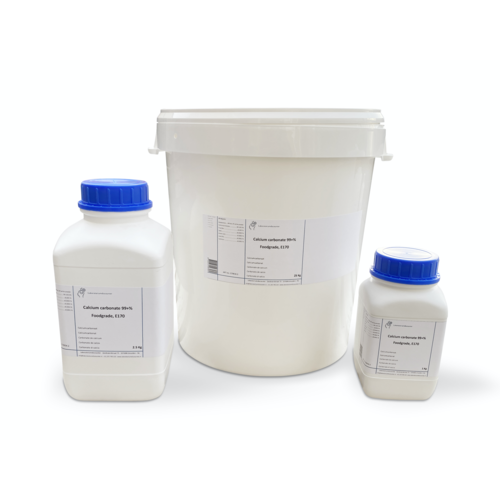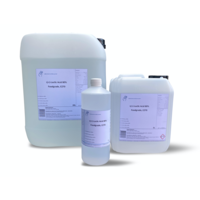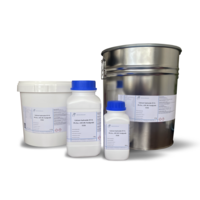You have no items in your shopping cart
Calcium carbonate 99+%, foodgrade, E170
- Buy 2 and save 5%
- Buy 6 and save 10%
What is Calcium Carbonate?
Calcium carbonate or in the common name lime carbonate, is a chemical compound of the elements calcium, carbon and oxygen with the chemical formula CaCO3. As a calcium salt of carbonic acid, it belongs to the group of substances called carbonates. It is a colorless crystalline solid whose crystal structure consists of the ions Ca2+ and CO32− in a ratio of 1:1.
What is calcium carbonate used for?
Natural calcium carbonate (limestone) is used in large quantities as a raw material for the building materials industry, as an aggregate in the steel industry, as a mineral fertilizer, as a feed lime and as a mineral filler in various industrial applications (e.g. in paper, paint, varnish, plasters, plastic and backs of carpets). In total, more than five billion tons of limestone are mined annually.
-Building material
The main field of application is the production of cement (calcium silicate, calcium aluminate) and quicklime.
Burning lime produces quicklime. Hydrated lime (calcium hydroxide Ca (OH) 2, slaked lime) is produced from this by quenching with water. It reacts with the carbon dioxide in the air to form lime and closes the technical lime cycle. Hydrated lime and lime are suitable as plaster or wall covering such as Tadelakt. The first discoverers of this phenomenon were the Romans, who exploited lime kilns on a large scale.
filler
In terms of volume sold worldwide, calcium carbonate is the most important filler. Although more than five percent of the Earth's crust consists of calcium carbonate rocks, only a few deposits are suitable for the extraction of fillers, which must be as white as possible. The largest industrial user of white calcium carbonates is the paper industry with a quantity of more than 10 million tons (worldwide) per year, followed by the plastics and building materials industry (gypsum and paint) with a total of another 15 million tons per year. For use in the paper industry, especially as a dye, deposits are mined in Europe, particularly in France, Italy, Germany, Norway and Austria, where the mineral is ground up by wet milling and sold as slurry (sometimes by tanker).
-Agriculture
In the soil structure, the calcium-magnesium carbonate content influences the pH value and thus the structural properties, the biotic activity as well as the storage capacity and conversion of the nutrients in the soil. This makes the pH value the most important parameter for the cultivation of all soil types. An adequate supply of lime with “free” calcium carbonate that is not bound to soil particles plays an important role. Limiting efforts to combat soil acidification and maintain or improve soil fertility. Calcium carbonate has been used for centuries to improve soil fertility in agriculture. The calcium carbonate content in the soil is determined by adding 10% hydrochloric acid and evaluating the reaction that occurs, such as foam formation.
-Other areas of application
Calcium carbonate was formerly used as blackboard chalk, especially in France as so-called champagne chalk, which consists of limestone, a chemically very pure calcium carbonate. About 55 percent of the chalk sold in Germany today consists of gypsum (calcium sulfate).
Calcium carbonate is approved as a food additive and coloring agent (E 170) and is often used in, for example, baking sandwiches. For other uses, calcium carbonate is crushed and/or ground up and sold in chunks or as flour. It is in table salt as a drip aid.
For some applications natural calcium carbonates are not optimal, therefore synthetic calcium carbonates are used here. Under the name Hydro-Calcit, synthetic calcium carbonate is used in water technology to deacidify water with "aggressive carbon dioxide". This process is still considered one of the oldest deacidification processes.
Together with magnesium carbonate, calcium carbonate is used in drugs for gastric acid regulation (antacids).
Buy food grade calcium carbonate?
This Calcium carbonate is not only very pure but also certified food grade! This means that it can be used as a food additive. High quality calcium carbonate for a friendly price! Order your Calcium carbonate at Laboratoriumdiscounter.nl!
Technical data:
Empirical formula CaCO3
Molar mass (M) 100,09 g/mol
Oplosbaarheid: ca. 14 mg/l (H2O, 20 °C)
WGK 1
CAS No.[471-34-1]
EG-Nr. 207-439-9









